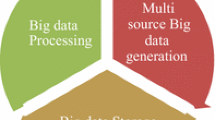Abstract
In this article we provide a formal framework for reidentification in general. We define n-confusion as a concept for modeling the anonymity of a database table and we prove that n-confusion is a generalization of k-anonymity. After a short survey on the different available definitions of k-anonymity for graphs we provide a new definition for k-anonymous graph, which we consider to be the correct definition. We provide a description of the k-anonymous graphs, both for the regular and the non-regular case. We also introduce the more flexible concept of (k, l)-anonymous graph. Our definition of (k, l)-anonymous graph is meant to replace a previous definition of (k, l)-anonymous graph, which we here prove to have severe weaknesses. Finally, we provide a set of algorithms for k-anonymization of graphs.

Similar content being viewed by others
References
Bloch I (1999) On fuzzy distances and their use in image processing under imprecision. Pattern Recognit 32:1873–1895
Chateauneuf A (1994) Combination of compatible belief functions and relation of specificity. In: Yager RR, Kacprzyk J, Fedrizzi M (eds) Advances in Dempster–Shafer theory of evidence. Wiley, New York, pp 97–114
Dalenius T (1986) Finding a needle in a haystack. J Off Stat 2(3):329–336
Domingo-Ferrer J, Torra V (2001) A quantitative comparison of disclosure control methods for microdata. In: Doyle P, Lane JI, Theeuwes JJM, Zayatz L (eds) Confidentiality, disclosure and data access: theory and practical applications for statistical agencies, North-Holland, pp 111–134
Domingo-Ferrer J, Torra V (2005) Ordinal, continuous and heterogeneous k-anonymity through microaggregation. Data Min Knowl Discov 11(2):195–212
Domingo-Ferrer J, Rufian-Torrell G (2012) Generalized microaggregation and generation of hybrid nominal and non-nominal data. (manuscript in preparation)
Dwork C (2006) Differential privacy. In: Proceedings of ICALP 2006, Lecture Notes in Computer Science, vol. 4052, pp 1–12
Feder T, Nabar SU, Terzi E (2008) Anonymizing graphs, CoRR abs/0810.5578, October
Hay M, Miklau G, Jensen D (2008a) Anonymizing social networks. In: Proceedings of VLDB 2008
Hay M, Miklau G, Jensen D, Towsley D, Weis P (2008b) Resisting structural re-identification in anonymized social networks. In: Proceedings VLDB Endow, pp 102–114
Klir G, Yuan B (1995) Fuzzy sets and fuzzy logic: theory and applications. Prentice Hall, UK
Liew CK, Choi UJ, Liew CJ (1985) A data distortion by probability distribution. ACM Trans Database Syst 10:395–411
Liu K, Terzi E (2008) Towards identity anonymization on graphs. In: Proceedings of SIGMOD 2008
Lowen R, Peeters W (1998) Distances between fuzzy sets representing grey level images. Fuzzy Sets Syst 99(2):135–150
Samarati P (2001) Protecting respondents’ identities in microdata release. IEEE Trans Knowl Data Eng 13(6):1010–1027
Samarati P, Sweeney L (1998) Protecting privacy when disclosing information: k-anonymity and its enforcement through generalization and suppression. SRI Intl Tech Rep
Smets P, Kennes R (1994) The transferable belief model. Artif Intell 66:191–234
Stokes K, Torra V (2011) On some clustering approaches for graphs. In: Proceedings of the IEEE international conference on fuzzy systems (FUZZIEEE), Taipei, Taiwan, 27–30 June 2011, 409415, ISBN 978-1-4244-7315-1
Stokes K, Torra V (2012) n-Confusion: a generalization of k-anonymity. In: Proceedings of the 5th international workshop on privacy and anonymity in the information society (PAIS12), Berlin, Germany, 30 March 2012
Sweeney L (2002a) Achieving k-anonymity privacy protection using generalization and suppression. Int J Uncertain Fuzziness Knowl Based Syst 10(5):571–588
Sweeney L (2002b) k-Anonymity: a model for protecting privacy. Int J Uncertain Fuzziness Knowl Based Syst 10(5):557–570
Winkler WE (2004) Re-identification methods for masked microdata, PSD 2004, Lecture Notes in Computer Science, vol 3050, pp 216–230
Zhou B, Pei J (2008) Preserving privacy in social networks against neighborhood attacks, Proc. ICDE 2008
Acknowledgments
Partial support by the Spanish MEC projects ARES (CONSOLIDER INGENIO 2010 CSD2007-00004), eAEGIS (TSI2007-65406-C03-02), COPRIVACY (TIN2011-27076-C03-03), and RIPUP (TIN2009-11689) is acknowledged. One author is partially supported by the FPU grant (BOEs 17/11/2009 and 11/10/2010) and by the Government of Catalonia under grant 2009 SGR 1135. The authors are with the UNESCO Chair in Data Privacy, but their views do not necessarily reflect those of UNESCO nor commit that organization.
Author information
Authors and Affiliations
Corresponding author
Rights and permissions
About this article
Cite this article
Stokes, K., Torra, V. Reidentification and k-anonymity: a model for disclosure risk in graphs. Soft Comput 16, 1657–1670 (2012). https://doi.org/10.1007/s00500-012-0850-4
Published:
Issue Date:
DOI: https://doi.org/10.1007/s00500-012-0850-4




